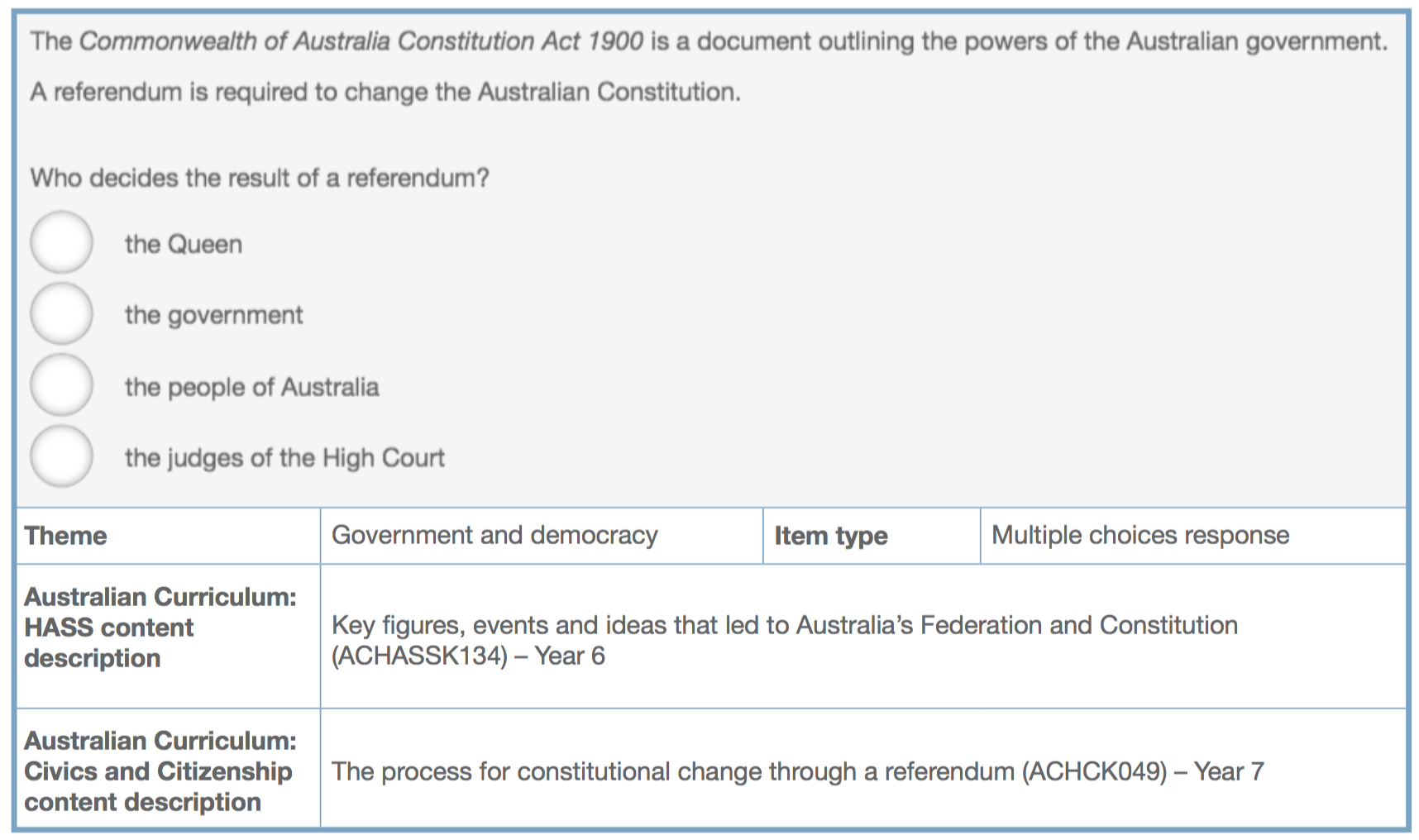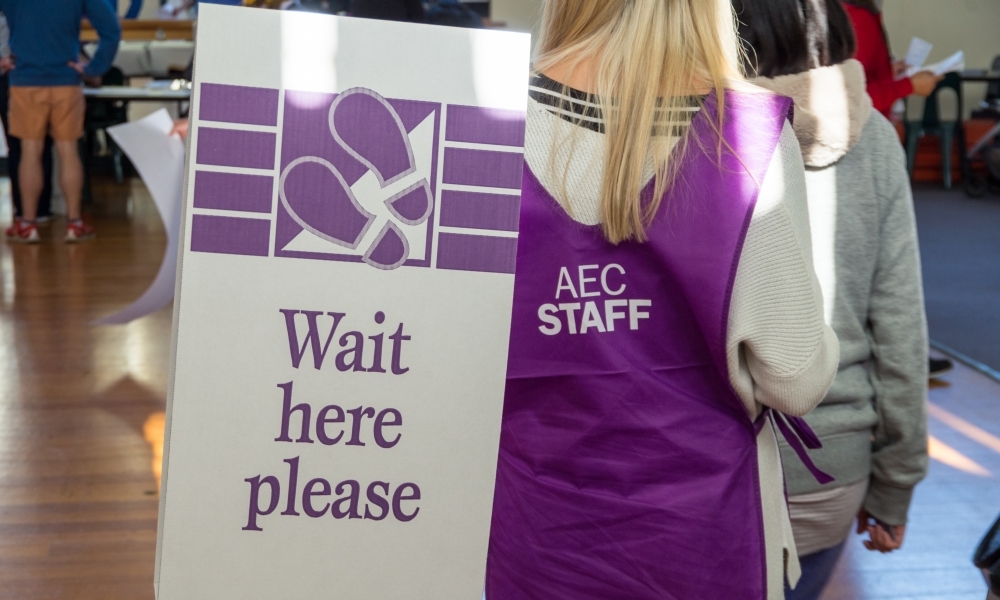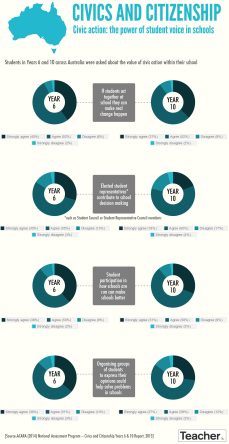As you begin to prepare your lessons for next year, you will be seeking out resources and support on how to best deliver these lessons, while at the same time addressing gaps in student knowledge and skills. Whole-school, cohort and individual student data can inform your future planning. It can also be useful to take a look at the national picture.
In this three-part series, we’ll be delving into the Civics and Citizenship learning area of the Australian Curriculum, and some aspects of the Australian Curriculum: History to explore students’ misconceptions, and to share some lesson activities to help your planning for 2022.
The Australian Curriculum: Civics and Citizenship provides students with the opportunity to develop the skills and values to be active and informed members of the Australian community. It aims to provide students with an appreciation of diverse perspectives, empathy, collaboration, negotiation, self-awareness and intercultural understanding.
The National Assessment Program – Civics and Citizenship (NAP-CC) assesses students’ skills, knowledge and understandings of Australian democracy and its system of government, and the rights and legal obligations of Australian citizens. It also provides an indication of student attitudes and their engagement in civic-related activities at school and in the community.
Overview of student performance
The most recent national report presents the findings of the sixth NAP-CC, which was administered in 2019. The assessment was delivered online to a representative, random sample of students in Year 6 and Year 10. Data were provided by 5611 Year 6 students from 332 schools, and 4510 Year 10 students from 295 schools.
The results reveal that Australian students’ performance has plateaued when it comes to understanding the importance of democracy and appreciating national values – just 38 per cent of Year 10 students reached the proficient standard, and 53 per cent of Year 6 students achieved the benchmark.
Achievement standard – what should students be able to do?
For each year level, the Australian Curriculum: Civics and Citizenship provides an achievement standard, which describes the attributes of a ‘typical’ student.
For Year 6, this includes being able to:
- explain the role and importance of people, institutions and processes to Australia’s democracy and legal system; and,
- describe the rights and responsibilities of Australian citizens and the obligations they may have as global citizens.
For Year 10, this includes being able to:
- compare and evaluate the key features and values of systems of government;
- analyse the Australian Government’s global roles and responsibilities;
- explain how Australia’s international legal obligations influence law and government; and,
- evaluate a range of factors that sustain democratic societies.
In NAP-CC, six proficiency levels were established, ranging from ‘level 5’ to ‘below level 1’.
The 2019 report explains students working at level 5 demonstrate precise knowledge and understanding of the workings of Australian democracy and the contexts in which it has developed. In general, they evaluate civic actions and recognise the potential for ambiguity in contested civics and citizenship concepts.
Students working at level 3 demonstrate knowledge of specific details of the Australian democracy, such as election processes. They make connections between the processes and outcomes of civil and civic institutions and demonstrate awareness of the common good as a potential motivation for civic action. Students working at this level also demonstrate awareness that civic processes can be explained and justified in relation to their broader purposes.
Students working at below level 1 demonstrate knowledge of the notion of fairness and recognise some basic human rights. They also demonstrate familiarity with basic aspects of democratic processes and legal systems and some familiarity with generalised characteristics of Australian identity.
Example: Government and democracy
Each NAP–CC 2019 assessment item was mapped to one of the content descriptions in the Australian Curriculum. The 2019 national report includes lots of great information for teachers, including examples and suggested activities. Here, we have chosen an example test item from the area ‘Government and democracy’. This test item was given to both Year 6 and Year 10 students.

Exemplar item from the assessment. Image credit: Australian Curriculum, Assessment and Reporting Authority (ACARA)[*] .
This item explored how a referendum brings about changes to the Australian Constitution. Students were asked to identify who decides the result in a referendum. One mark was awarded for identifying that the people of Australia decide the result of a referendum to change the Australian Constitution. One mark demonstrated performance at level 3 on the NAP–CC scale.
Student performance: Thirty-six per cent of Year 6 students received one mark for this item, with 28 per cent believing that the government, rather than the people, determined the result of a referendum. Forty-five per cent of Year 10 students received one mark for this item, with 24 per cent believing that the government determined the result of a referendum.
Possible lesson activities
The theme ‘Government and democracy’ involves a study of Australian democracy and the key institutions, processes and roles in Australia’s system of government. Here are some questions you could explore with students:
- How is Australia’s system of democratic government shaped by the Constitution?
- What are the freedoms and responsibilities of citizens in Australia’s democracy?
- What influences shape the operation of Australia’s political system?
- How is Australia’s democracy defined and shaped by the global context?
To further develop and extend students and their understanding of the function of the Australian Constitution, the national report suggests teachers consider the following learning activities:
- Examine the key people (such as Henry Parkes, Edmund Barton, George Reid, John Quick) and events (such as the Tenterfield Oration, the Corowa Conference, the colonial referendums of 1898 and 1900) involved in Australia’s path to Federation
- Identify the key features of Australia’s system of government under the Constitution, including the separation of powers between legislature, executive and judiciary
- Describe the process by which the Australian Constitution can be changed, including how referendums are initiated and decided
- Examine examples of successful and unsuccessful attempts to change the Australian Constitution, such as the successful vote in 1967 and the unsuccessful vote in 1999
- Debate the advantages and disadvantages of Australia having a Constitution that can only be amended by referendum supported by a majority of the people in a majority of the states and territories (Fraillon et al., 2020).
The Parliamentary Education Office has also produced this useful resource Year 5-12 students, for holding a referendum in your classroom which includes a ballot paper template, voting table and extension activities.
Stay tuned: In the next installment of this three-part series we’ll discuss two more themes explored in the national report, ‘Laws and citizens’ and ‘Citizenship, diversity and identity’, and will provide examples and teaching activities to help inform your lesson planning.
References
Fraillon, J., Friedman, T., Ockwell, L., O'Malley, K., Nixon, J., & McAndrew, M. (2020). National Assessment Program Civics and Citizenship National Report 2019. Australian Curriculum Assessment and Reporting Authority. https://research.acer.edu.au/civics/33
[*]©Australian Curriculum, Assessment and Reporting Authority (ACARA) 2009 to present, unless otherwise indicated. This material was downloaded from the ACARA website (www.acara.edu.au) (Website) (accessed October 2021) and was not modified. The material is licensed under CC BY 4.0 (https://creativecommons.org/licenses/by/4.0/). ACARA does not endorse any product that uses ACARA material or make any representations as to the quality of such products. Any product that uses material published on this website should not be taken to be affiliated with ACARA or have the sponsorship or approval of ACARA. It is up to each person to make their own assessment of the product.
Consider the list of lesson activities outlined in the article. Which of these could you use with students in your classroom? Which resources would you need to support you to do this? If you were hoping to extend students in the area of ‘Government and democracy’, how would you go about doing so?



